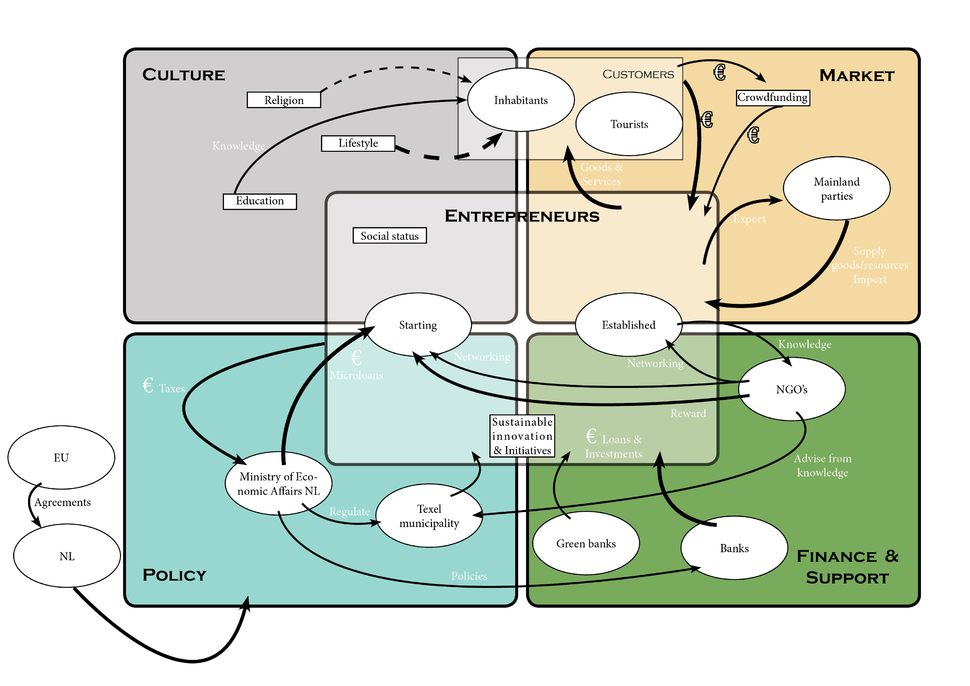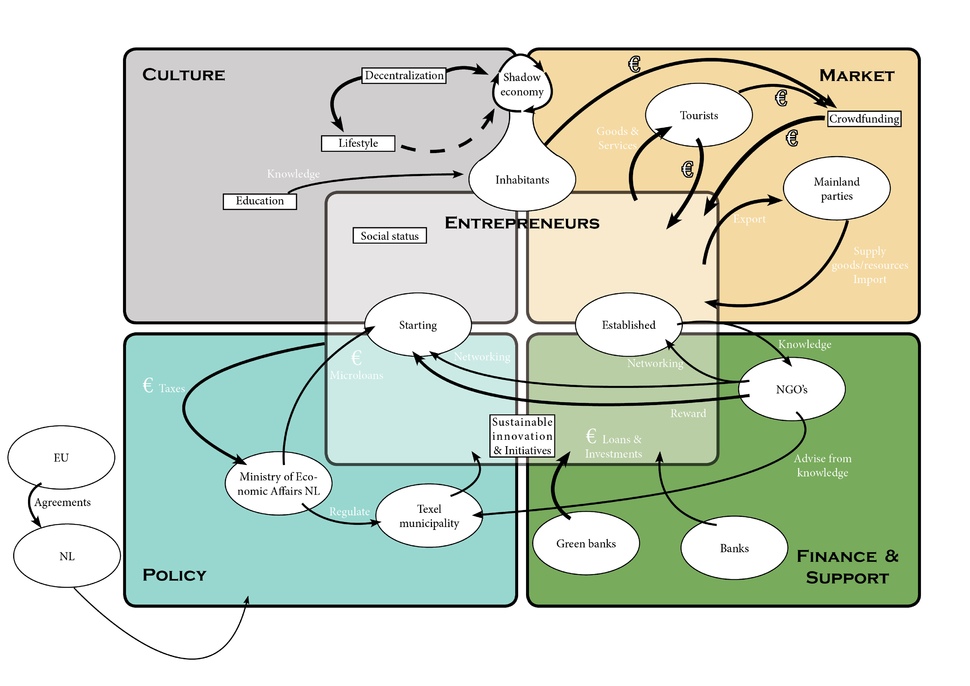In this chapter we will summarize the main findings of each of the chapters' analyses as well as the proposed design for the future system.
Chapter 1: Exploring the entrepreneurship subsystem

Several initiatives and platforms gathering the entrepreneurs already established or incipient in Texel were analysed as part of the subsystem. TOP-Texel, JONT, LTO Noord afdeling Texel, TexLabs or Stichting Duurzaam Texel were described and their potential role in the future transition of entrepreneurship was acknowledged. Moreover, an overview of the current Texel entrepreneurs was done, from which it is possible the read the most important markets in Texel.
Chapter 2: Changing the daily life

In this chapter we also looked at various already established sustainable projects and initiatives in Texel in order to see, what is possible to learn from the current situation on Texel.
Most importantly, the design gap between now and then was redefined and for such the future subsystem was sketched more in detail. Several important concepts of the future subsystem were pointed out and viewed, how they may work in the Texel context:
- sustainability awareness of entrepreneurs and customers
- collaboration and knowledge sharing
- independence
Chapter 3: Transitions are made by people
Chapter 3 discussed the most important current and future trends relevant to our subsystem of entrepreneurs. These were:
- green banking
- crowdfunding
- (open) patents & knowledge sharing
- importance of ICT in business
- lean management
- decentralization & community initiatives
- demographical changes, in case of Texel youth leaving the island
These trends were firstly discussed in length in general and afterwards envisioned in the Texel concept while seeing, which of these trends go in the direction of the envisioned future of our subsystem. As we consciously picked trends relevant to entrepreneurs, all of them were further used in our designed pathways in chapter 4.
Chapter 4: Design pathways
In chapter 4 two different pathways were described, both emerging from the trends described in the previous chapter. First pathway was named as “business pathway” which requires a high level of participation from the side of the municipality of Texel in order to reach the island self-sufficiency and the other as “hippie pathway” putting a lot of importance on Texel community regarding financing as well as sharing the entrepreneurial knowledge.
Moreover, various innovative technological solutions, changing the presence in the future subsystem were mentioned, such as importance of Internet, apps for serious gaming engaging the community and customers in sustainable self-awareness, augmented reality, etc.
further questions
There are some things which we seek to clarify during the bubble week in Texel, because of the difficulties we experienced in answering these without being actually present in Texel. Several questions were formed, however we believe that more will be formed in the discussions with other research groups:
- What is the perception of the Texelaars towards the mainland and their dependence on it? Do the Texelaars prefer local / sustainable products over the common ones?
- How is the value chain organised regarding most of the Texel entrepreneurs? Are the suppliers local or outside from Texel?
- What is the perception of the established local entrepreneurs about self-sufficiency of Texel? Do the current entrepreneurs care about self-sufficiency?
- What are the main pitfalls of turning the current Texel businesses into sustainable businesses?
- How are the starting entrepreneurs in Texel financed?
- What is the willingness of the locals to participate in the entrepreneurial activities of the island?
- How are the knowledge platforms (JONT, TOP Texel, etc.) working in practise? Where are the windows of opportunity for the future of these platform?